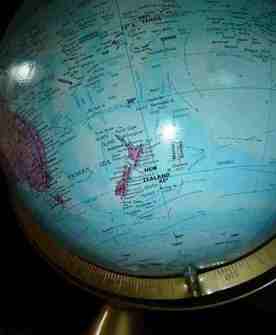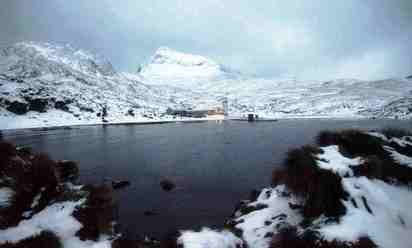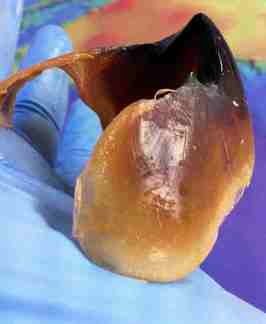A CAMPANHA
PROPOLAR 2012-2013
Novembro de 2012 a Março de 2013
PROPOLAR 2012-2013
Novembro de 2012 a Março de 2013
 Lembraste da sensação de chegada à tua casa depois de umas férias em que te esqueceste daquela rotina diária? Pois é, eu ando nessa sensação há MUITO tempo. Finalmente regresso a Wellington, após uma semana de aulas, palestras e reuniões em Christchurch, e revelou-se uma alegria. Finalmente terei uma rotina semanal (pelo menos até Março)!!!! Após tanto tempo a viajar, é tão bom conheçer bem a cama onde dormes, onde está tudo na cozinha, onde vais trabalhar e o que tens de fazer (dependendo só de ti para o sucesso do projeto), que (poucos) amigos ou colegas estão por perto para um cinema, para ir jantar fora ou ter alguém para ir jogar à bola ou ir fazer surf (já que os verdadeiros amigos estão longe).  Tudo isto me faz lembrar as expedições à Antárctica e como finalmente estamos na base cientifica e prontos para o trabalho de campo. Aqui é igual e esta semana foi assim: dar a conheçer ao meu corpo que vamos estar numa rotina de “trabalho-casa” e “casa-trabalho”. Mas não foi fácil. Primeiro: a minha casa fica no topo de uma autêntica “montanha”. Tudo bem descer de manhã mas são 25 minutos SEMPRE A SUBIR à tarde/noite. Chegar a casa sem tocar no chão é sinónimo de vitória! Segundo: passar horas sentado a analisar amostras atrás de amostras, centenas e centenas de mandibulas de cefalópodes (lulas e polvos), é algo que adoro fazer mas exige continua concentração, dedicação e atenção ao que se está a fazer.  Continuo totalmente fascinado pela forma destas mandibulas, e como, de acordo com a sua forma, posso identificá-las à espécie, técnica desenvolvida principalmente por um senhor chamado Malcolm Clarke (que vive na Ilha do Pico, Açores e tem um museu lindissimo sobre lulas e baleias). Mais, com equações matemáticas, podemos estimar, através de uma medição na manbibula, o tamanho e peso do animal em questão. Fascinante, não é? Uma lula, que viveu nas profundezas do Oceano Antártico e águas próximas, foi apanhada por um albatroz, que a deu ao seu filhote, que a digeriu com a exceção desta mandibula. Antes de o filhote deixar o ninho, ele regurgita tudo o que não conseguiu digerir, incluindo todas as mandíbulas dos cefalópodes que lhes foram dadas pelos seus pais. Agora aquela mandíbula daquela lula está na minha mão, a ser identificada com Architeuthis dux. Esta lula pode chegar a grande dimensões (> 150 kg)! No meio de tudo isto, o tempo voa no laboratório. De repente é hora do almoço, altura em que tento “ver emails”, resolver questões de trabalho e comer alguma coisa. Existe sempre uma mensagem querida, um email interessante, uma skype call para fazer. Terceiro: após uma tarde totalmente devotada a mais trabalho nas amostras, há que subir a “montanha”. Inicialmente, eu tinha um certo receio de andar de bicicleta em cidades. Na verdade, Wellington é a capital da Nova Zelândia. Aqui é obrigatório usar capacete o que julgava ser bom. No entanto, o pessoal do instituto me avisou logo que o impato de evitar acidentes com bicicletas não se notou. Aliás, o efeito foi contrário; os condutores de automóveis pensam que bater num ciclista já não é um grande problema pois eles têm capacete!? À noite tento acabar tudo o que não consegui terminar naquele dia... rever mais trabalho, resolver “emails”, acabar de pôr dados dos resultados, escrever crónicas para o blog ;) e tentar arranjar tempo para mim e descansar um pouco. Faço isto há uma semana, o que podia sugerir estar a surgir resultados, mas digo-vos... a subida diária da “montanha” até a casa continua a ser uma carga de trabalhos! Boa semana. José Xavier, 24 Janeiro 2013, Wellington, Nova Zelândia Do you remember that feeling when you arrive from long vacations and forgot that daily routine? Well, I on that feeling for a LONG time, due to my professional commitments. But finally, I visualize the end of it, at least until March. After a week in Christchurch lecturing, meetings and talks, I am finally in Wellington, for a little while! It is so good to know the bed you sleep in, to know where everything is in the kitchen, to know which desk I will be working, to know your agenda and what you need to do and to known which (small number) of friends are around to go for a cinema, to go out for dinner, or simply have a group of colleagues to play football or surf with. All of this reminds me of my Antarctic expeditions, when finally I am in the research station, all preparations are done and I am ready to work! Here, it is the same and this week it felt like that: let my body know that we will be in a daily routine of “work-home” and “home- work” (like “research base- penguin colony” and “penguin colony- research base”. But it was not easy. First: my house is on the top on a “mountain”! (at least for me). It is so nice to go down in the morning but those 25 minutes cycling up the “mountain” is not easy. Second: spending hours in the laboratory (like spending hours in the colonies of penguins or albatrosses) analyzing samples and more samples, thousands and thousands of cephalopod beaks (i.e. mandibles from squid and octopods) requires continuous concentration, dedication and attention to everything you do. I am still totally fascinated by the process of identifying beaks. Depending on the shape of each beak, we can identify it to species level. This technique was mainly developed by Malcolm Clarke, who lives in the Azores and has the most amazing museum about whales and squid, and their interactions. By using mathematical equations, we can even estimate the original size of the squid and how much it weighed. Fascinating, isn’t it? One squid that lived in the depths of the Antarctic Ocean, that was caught by an albatross and was given to his chick. Before the chick fledges, it regurgitates everything that he couldn´t digest, including cephalopod beaks, such as the one in my hand right now, identified as Architeuthis dux. This squid can reach more than 150 kg (330 lb). And with this, time flies...Thirdly: after an afternoon of more exciting work in the lab., there is a “mountain” to climb. I have been doing this for a week, which could suggest that I would start getting some results but let me tell you....this daily climbing the “mountain” home has not got any sweeter yetJ Have a great week! Os comentários estão fechados.
|
Consulta de posts por projeto
Tudo
Consulta de posts por ordem cronológica
Julho 2013
|